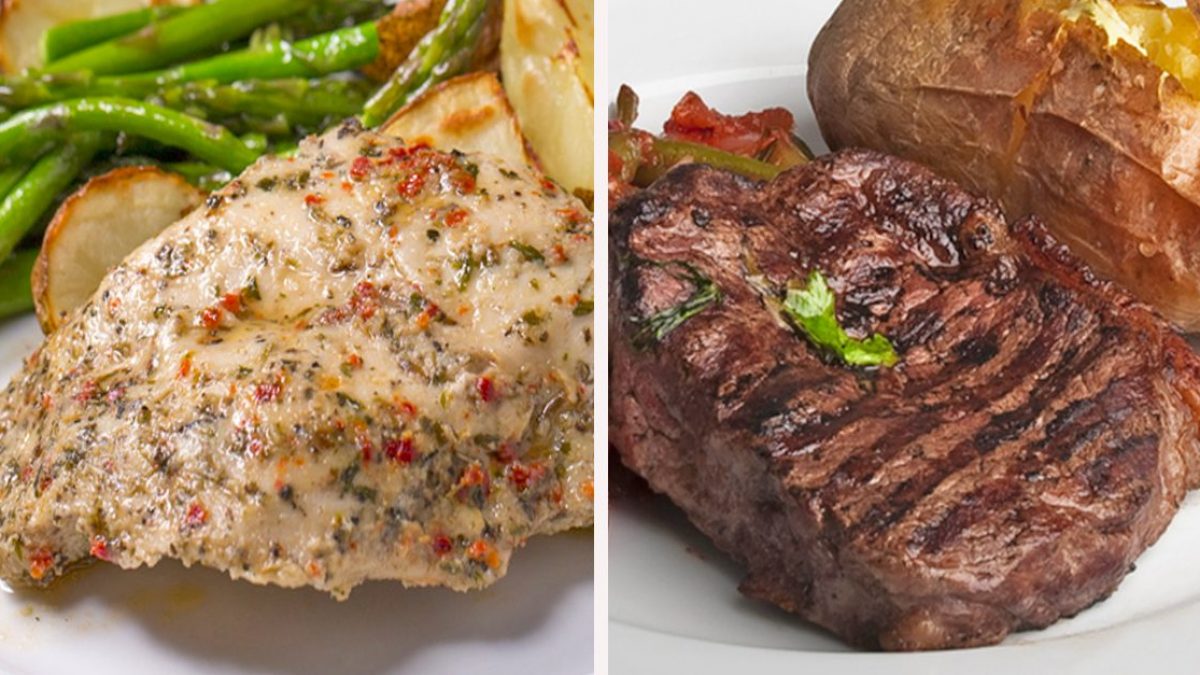
There are various distinctions between red meat and white meat. Red meat, like beef and pork, is higher in saturated fats and cholesterol but provides essential nutrients like iron and zinc. In contrast, white meat, including poultry meats like chicken and turkey, is leaner, lower in fat and calories, and associated with a reduced risk of cardiovascular disease. Below, we take a look at the nutritional differences, health effects, and optimal cooking methods for both types of meat, offering valuable insights to help you make an informed dietary choice for you and your loved ones.
3 Major Differences Between Red Meat and White Meat

1. Nutritional Differences
Red meat typically refers to meats derived from mammals, such as beef, pork, and lamb, which are characterized by their darker color due to higher levels of myoglobin. In contrast, white meat generally includes poultry meats like chicken and turkey, which have a lighter color and lower myoglobin content.
Nutritionally, red meat tends to be higher in saturated fats and cholesterol compared to white meat. However, red meat also provides essential nutrients such as iron, zinc, and B vitamins. On the other hand, white meat is lower in fat and calories, making it a leaner option. It's also a good source of protein and contains less cholesterol than red meat.

2. Health Effects
The consumption of red meat has been associated with an increased risk of certain health conditions, including heart disease, stroke, and certain cancers. This is primarily due to its higher saturated fat content and potential exposure to carcinogens during cooking, such as heterocyclic amines (HCAs) and polycyclic aromatic hydrocarbons (PAHs).
In contrast, white meat is often considered a healthier choice due to its lower saturated fat content and association with a reduced risk of cardiovascular disease. Poultry meats like chicken and turkey are also rich in nutrients like niacin and selenium, which have been linked to various health benefits.
3. Cooking Methods
Both red meat and white meat can be prepared using a variety of cooking methods, including grilling, roasting, baking, and frying. However, the cooking methods employed can significantly impact their nutritional profiles and health effects.
When cooking red meat, it's important to avoid charring or overcooking, as this can lead to the formation of harmful compounds like HCAs and PAHs. Instead, opt for methods that involve lower temperatures and shorter cooking times, such as roasting or stewing.

For white meat, cooking methods like grilling, baking, or poaching are popular choices that help retain moisture and flavor without adding excess fats. Marinating poultry meats before cooking can also enhance tenderness and flavor while reducing the formation of potentially harmful compounds.
Conclusion

The debate between red meat and white meat revolves around their nutritional composition, health effects, and cooking considerations. While red meat offers valuable nutrients like iron and zinc, it's important to consume it in moderation and opt for lean cuts to minimize saturated fat intake. On the other hand, white meat, particularly poultry meats like chicken and turkey, is a leaner option that provides essential protein and nutrients with fewer calories and less saturated fat. Ultimately, incorporating a variety of meats into a balanced diet and practicing healthy cooking methods can help optimize nutrition and promote overall well-being.
;Resize,width=767;)
